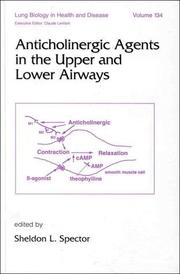| Listing 1 - 3 of 3 |
Sort by
|
Book
Year: 2013 Publisher: Bruxelles: UCL. Faculté de pharmacie et des sciences biomédicales,
Abstract | Keywords | Export | Availability | Bookmark
 Loading...
Loading...Choose an application
- Reference Manager
- EndNote
- RefWorks (Direct export to RefWorks)
The term "dystonia" was used for the first time a hundred years ago by Oppenheim. He reported the first clinical observations, an alteration of the muscular tone and abnormal postures, as "dystonia musculorum deformans". At that time, those concerned Romanian Jewish children. Today, dystonia is recognized as a motor disorder characterized by involuntary and sustained contractions of opposing muscles causing twisting movements and abnormal postures. If dystonia is a movement disorder; other brain functions are generally not affected. This rare but serious pathology has a significant semiotic and etiological heterogeneity which makes the implementation of treatment difficult. Treatment includes surgical acts, injections of botulinum toxin and other oral substances. The major objectives of this thesis are to resume these oral drugs frequently prescribed, to highlight the evidences of their therapeutic efficacy and their role played in the treatment of dystonia. However, due to the fact that few reliable studies on oral therapies to treat dystonia exists, and, even if only anticholinergics might have proven their therapeutic efficacy, more rigorous studies are needed to improve treatment strategies and help practitioners in their professional practice. Le terme « dystonie » a été utilisé pour la première fois il y a environ 100 ans par Oppenheim. Il a rapporté les premières observations cliniques sous le nom de « dystonia musculorum deformans ». Celles-ci concernaient des enfants juifs roumains. A cette époque, il décrivait une altération du tonus musculaire et des postures anormales. La dystonie est maintenant reconnue comme un désordre moteur caractérisé par des contractions musculaires involontaires et soutenues qui engendrent des mouvements de torsion et postures anormales. La dystonie est donc un trouble du mouvement, mais les autres fonctions cérébrales ne sont en général pas touchées. Cette pathologie rare mais grave présente une importante hétérogénéité sémiologique et étiologique ce qui rend son traitement difficile à mettre en place. Le traitement comprend certains actes chirurgicaux, des injections de toxine botulique et toute une série de substances orales. Ce mémoire tend à synthétiser ces substances orales souvent prescrites, leurs preuves d'efficacité et leur place dans la stratégie de traitement de la dystonie. Cependant il existe extrêmement peu d'études fiables sur les traitements oraux de la dystonie. Seuls les anticholinergiques auraient prouvés leur efficacité dans des études randomisées contrôlées. Des études rigoureuses sont donc nécessaires afin d'améliorer les stratégies de traitement de cette maladie et aider les praticiens dans leur exercice professionnel.
Dissertation
ISBN: 9782930404806 Year: 2011 Publisher: Liège : Presses de la Faculté de Médecine Vétérinaire de l'Université de Liège,
Abstract | Keywords | Export | Availability | Bookmark
 Loading...
Loading...Choose an application
- Reference Manager
- EndNote
- RefWorks (Direct export to RefWorks)
Rats --- Lung injury --- Anti-inflammatory agents --- Cadmium --- Cholinergic antagonists --- chemically induced --- pharmacology --- toxicity

ISBN: 082471959X Year: 1999 Publisher: New York, NY ; Basel ; Hong Kong : Marcel Dekker,
Abstract | Keywords | Export | Availability | Bookmark
 Loading...
Loading...Choose an application
- Reference Manager
- EndNote
- RefWorks (Direct export to RefWorks)
RESPIRATORY PHYSIOLOGY --- CHOLINERGIC ANTAGONISTS --- CHOLINERGIC ANTAGONISTS --- BRONCHODILATOR AGENTS --- BRONCHODILATOR AGENTS --- RESPIRATORY TRACT DISEASES --- THERAPEUTIC USE --- PHARMACOLOGY --- THERAPEUTIC USE --- PHARMACOLOGY --- DRUG THERAPY --- RESPIRATORY PHYSIOLOGY --- CHOLINERGIC ANTAGONISTS --- CHOLINERGIC ANTAGONISTS --- BRONCHODILATOR AGENTS --- BRONCHODILATOR AGENTS --- RESPIRATORY TRACT DISEASES --- THERAPEUTIC USE --- PHARMACOLOGY --- THERAPEUTIC USE --- PHARMACOLOGY --- DRUG THERAPY
| Listing 1 - 3 of 3 |
Sort by
|

 Search
Search Feedback
Feedback About UniCat
About UniCat  Help
Help News
News